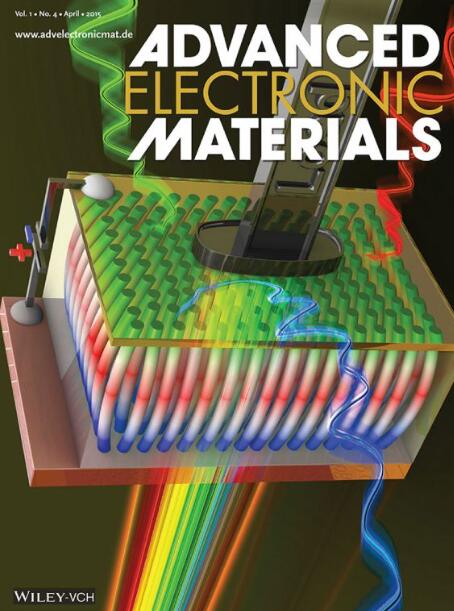真实器件尺度下相变存储器集合过程的百万原子模拟
IF 5.3
2区 材料科学
Q2 MATERIALS SCIENCE, MULTIDISCIPLINARY
引用次数: 0
摘要
相变材料被用于多种使能技术,如存储类存储器、神经形态器件和嵌入微控制器的存储器。这些应用的关键功能特性是在过冷液相中快速成核和生长。在过去的十年中,基于密度泛函理论(DFT)的原子模拟为这一过程的早期阶段提供了重要的见解。然而,这些模拟被限制在几百个原子中,最多持续几秒。最近,DFT模拟的范围通过利用机器学习技术得到了极大的扩展。在这项研究中,研究人员表明,利用最近设计的神经网络电位来模拟典型相变化合物Ge2Sb2Te5的结晶过程,可以在真实存储器件的长度和时间尺度上模拟数百万原子模型中的结晶过程。模拟提供了晶体/非晶态边缘晶体成核和晶体生长之间微妙相互作用的生动的原子图像。此外,模拟还可以量化控制电子输运的点缺陷的分布,这些点缺陷是在装置设定过程的实际条件下生长的非常大的晶体中。本文章由计算机程序翻译,如有差异,请以英文原文为准。
Million‐Atom Simulation of the Set Process in Phase Change Memories at the Real Device Scale
Phase change materials are exploited in several enabling technologies such as storage class memories, neuromorphic devices and memories embedded in microcontrollers. A key functional property for these applications is the fast crystal nucleation and growth in the supercool liquid phase. Over the last decade, atomistic simulations based on density functional theory (DFT) have provided crucial insights on the early stage of this process. These simulations are, however, restricted to a few hundred atoms for at most a few ns. More recently, the scope of the DFT simulations is greatly extended by leveraging on machine learning techniques. In this study, it is showed that the exploitation of a recently devised neural network potential for the prototypical phase change compound Ge2 Sb2 Te5 , allows simulating the crystallization process in a multimillion atom model at the length and time scales of the real memory devices. The simulations provide a vivid atomistic picture of the subtle interplay between crystal nucleation and crystal growth from the crystal/amorphous rim. Moreover, the simulations have allowed quantifying the distribution of point defects that controls electronic transport, in a very large crystallite grown at the real conditions of the set process of the device.
求助全文
通过发布文献求助,成功后即可免费获取论文全文。
去求助
来源期刊

Advanced Electronic Materials
NANOSCIENCE & NANOTECHNOLOGYMATERIALS SCIE-MATERIALS SCIENCE, MULTIDISCIPLINARY
CiteScore
11.00
自引率
3.20%
发文量
433
期刊介绍:
Advanced Electronic Materials is an interdisciplinary forum for peer-reviewed, high-quality, high-impact research in the fields of materials science, physics, and engineering of electronic and magnetic materials. It includes research on physics and physical properties of electronic and magnetic materials, spintronics, electronics, device physics and engineering, micro- and nano-electromechanical systems, and organic electronics, in addition to fundamental research.
 求助内容:
求助内容: 应助结果提醒方式:
应助结果提醒方式:


